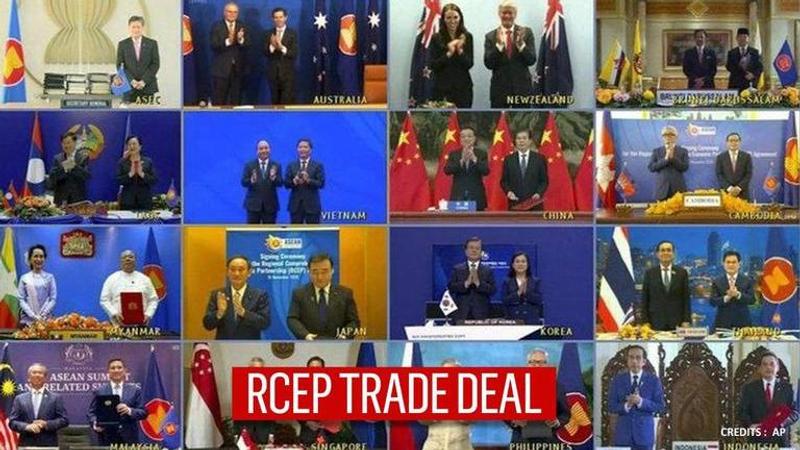Published 19:29 IST, November 16th 2020
RCEP Trade Deal: What happens after it is signed? What are its benefits?
What could become the world’s largest free trade agreement, 15 Asian-Pacific nations have signed the RCEP that is covering nearly third of global population.

Advertisement
What could become the world’s largest free trade agreement, 15 Asian-Pacific nations have signed the Regional Comprehensive Economic Partnership (RCEP) that is covering nearly a third of the global population and at least 30 per cent of its global gross domestic product. The RCEP trade deal will reportedly lower the tariffs and is aimed to tackle the protectionism while also boosting the investment and allow a more unconfined movement of goods within the region.
The nations who have signed the RCEP are China, Japan, South Korea, Australia, New Zealand along with 10 members of the Association of South-East Asian Nations (ASEAN) that include Brunei, Vietnam, Laos, Cambodia, Thailand, Myanmar, Malaysia, Singapore, Indonesia and the Philippines. Even though India was a participant in the preliminary discussions of the pack, it eventually opted out because of concerns related to cheap Chinese imports.
What happens now that RCEP is signed?
The RCEP trade deal has to be ratified before it comes into effect, a process that can potentially take months to start and years to complete. The 510-page and twenty-chapter agreement was made public only recently on November 15, after it was signed at the end of a four-day ASEAN summit in Hanoi. The latest trade pact will not only provide some flexibility for the less-developed member states to implement and legislative changes but also provides an added benefit for nations who have their respective trade agreements.
Basically, the RCEP will allow easier movements of goods between the 15 members by creating a common set of rules of origin. Following the signing, while some states have included what all the trade agreement includes, others have mentioned what it has excluded. Irrespective of the clauses mentioned in the pact as of now, it still needs to be ratified by at least six ASEAN countries and three non-ASEAN signatory countries.
Most prominent change by RCEP is that it marks the first single agreement that includes China, Japan and South Korea. The process which was otherwise hindered by historical and diplomatic differences has now been achieved by the RCEP. The trade dispute between Japan and South Korea is budded from Japan’s wartime colonisation of the Korean peninsula. According to reports, the South Korean officials have previously said in 2019, when the relations were tense, that the trade restrictions by Japan have violated the “spirit” of the RCEP.
RCEP mainly focuses prominently on the reduction of tariffs and increasing the market access but is reportedly viewed a little less comprehensive than the Comprehensive and Progressive Agreement for Trans-Pacific Partnership (CPTPP) that includes all signatories of RCEP except the United States.
19:31 IST, November 16th 2020




